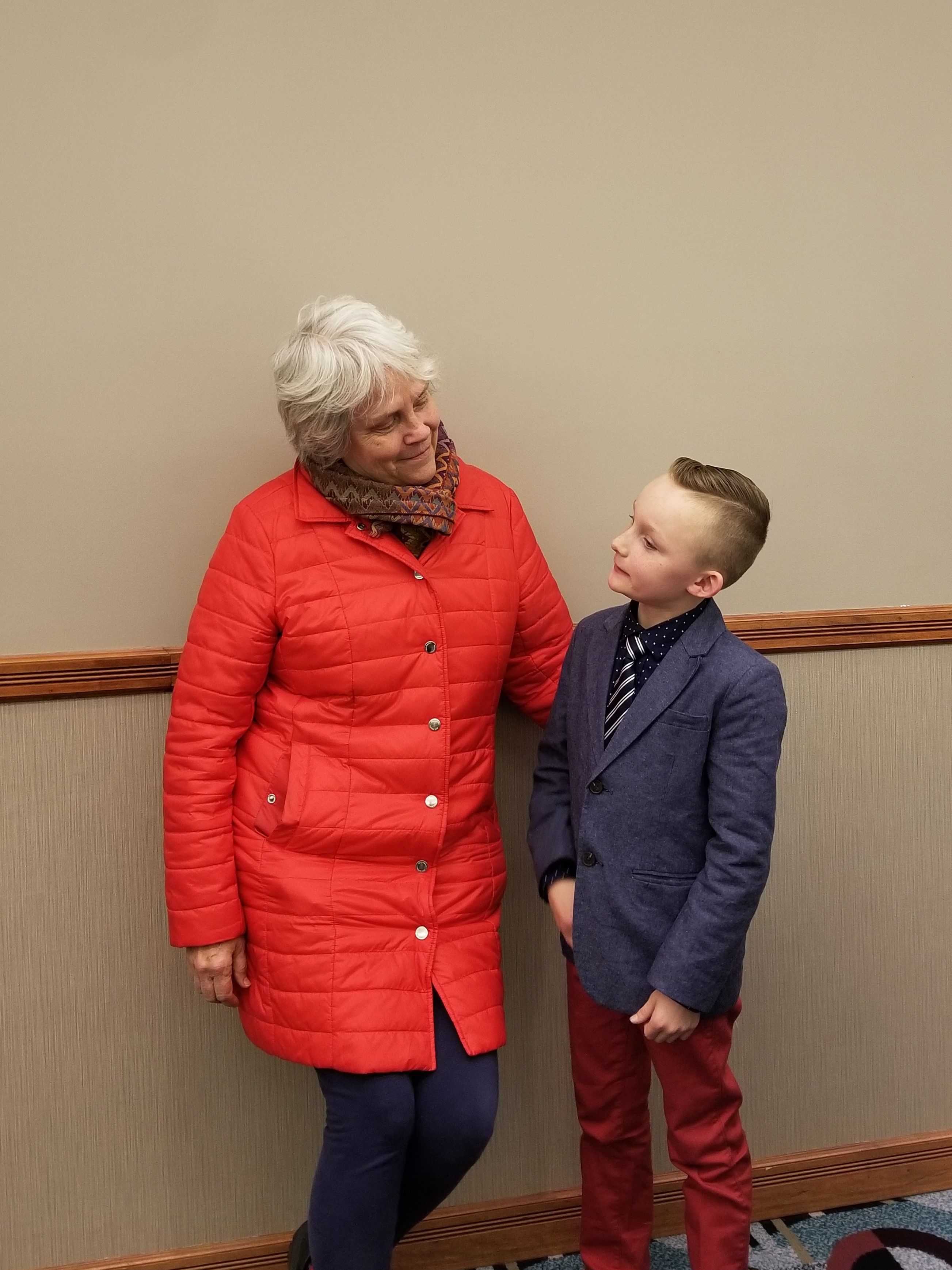
Meet Barbara!
When we focused on our Tree of Hope campaign for our weekly stories, many of the families we spoke with mentioned members of our Family Development Center team, so we thought we would highlight their program this month. This week we are diving deep into resources for families with young children.
Barbara Hoffmann has worked for DSC over 12 years providing speech and language therapy, feeding therapy and evaluations through Illinois’ Early Intervention program. For the state of Illinois, this is typically birth to 3 years of age, however DSC has a grant funded by the Champaign County Developmental Disabilities Board (CCDDB) that provides funding for children up to 6 years old in some cases.
Many of the children receiving therapy services through Illinois Early Intervention are diagnosed with Autism Spectrum Disorder (ASD). Developmental pediatricians make this diagnosis not therapists. Research points to 7 characteristics and difficulties that lead us to suspect autism rather than another language delay or disorder in young children. This list includes the following:
Limited eye contact and eye gaze
Inconsistent orienting to one’s name
No pointing and showing objects of interest
Lack of imaginative or pretend play
Difficulty imitating actions, sounds and words
Problems understanding and using nonverbal communication
Language development patterns including regression with a loss of acquired skills
Many children diagnosed with autism also demonstrate difficulty processing sensory information, but there are also children who are diagnosed with Sensory Processing Disorder (SPD). The overlap between APD and SPD can be confusing for parents, extended family members, therapists and physicians. The STAR Institute for Sensory Processing Disorder in Denver, Colorado has been providing cutting-edge treatment solutions to children and adults with SPD since 2005, and parents may find their resources helpful. The STAR Institute’s symptoms checklists for infant/toddlers, preschoolers, school age children, adolescents and adults can be found at spd.star.org/basic/symptoms-checklist. The checklist for infant/toddlers includes symptoms like a) has trouble falling asleep or staying asleep, b) is extremely irritable when dressed/seems uncomfortable in clothes and c) rarely plays with toys especially those requiring dexterity among other symptoms.
Barbara recommends two books by Angie Voss, OTR, to help parents better understand what sensory processing is, what a symptom might look like and suggestions for helping a child. Ms. Voss’s first book, Your Essential Guide to Understanding Sensory Processing Disorder, is an easy-to-read and understand overview of the characteristics and signs of SPD as well as how to help a child on a daily basis. The second book, Understanding Your Child’s Sensory Signals, lists symptoms and ideas to help so parents can put suggestions in action right away. She has also written The Adventures of Sensory Avoider Allie: Allie Only Eats Three Foods and Understanding Your Baby’s Sensory Signals. Angie Voss’s website is A Sensory Life!
Joint attention is another concept we hear a lot about with children diagnosed with APD and sometimes children diagnosed with SPD. Joint attention occurs when two people share interest in an object or event and there is understanding between the two people that they are both interested in the same object or event. Joint attention should emerge around 9 months of age and be very well-established by 18 months of age. Joint attention means BOTH of you, parent and child, know you’re talking about the same thing and are actively sharing the experience. Laura Mize, SLP (Speech & Language Pathologist) of Teach Me to Talk, uses this list of questions with parents to help them look at their child’s joint attention skills:
Is a child able to listen and respond to you when he’s busy with something else?
When you point to something, does your child look at it?
Will your child try to show you things? Does she point to get you to look at something?
Does he seem too occupied or distracted to listen to you or look at what you’re trying to show him?
When you show a child something new, is she able to listen to you and turn her attention to include the new thing?
Do you seem to disappear to your child when you bring out your child’s favorite food, a preferred toy or a screen like a tablet or iPad?
Does your child often lock his eyes on the items of interest but never look back to you?
If you answered “no” to questions 1, 2, 3, 4, 5 and 6 or “yes” to 7, there’s reason for concern.
We would love your feedback on this story. Did you find this article helpful? What type of stories do you most enjoy from DSC?
For more resources, information about screenings and tools, please contact DSC at (217) 356-9176.






